Gianni Ferrari, celebrity photographer: ‘No one ever said no to me’
For more than half a century, he portrayed kings, queens, actors and artists, including legends like Brigitte Bardot, Catherine Deneuve and Jacqueline Kennedy. His shots have become part of the history of photography
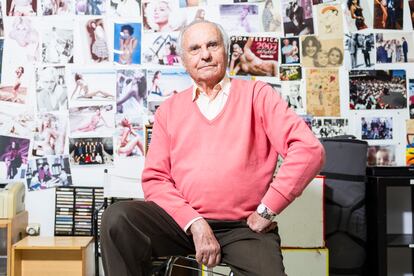
Gianni Ferrari, 89, walks up and down the stairs of his home in Madrid’s Mirasierra neighborhood with the agility of a young gymnast. “When I was a kid living in Tripoli, I won gold medals in track and field,” recalls the Italian-born photographer who built his career in Spain. In the end, he didn’t take up sprinting, but instead spent more than half a century chasing kings, princes, duchesses, actresses and singers in search of the perfect snapshot. In 1962 he set up his own photo agency, Contifoto, which provided exclusives for the booming celebrity magazines of the era. Today, Ferrari has more than 50,000 photographs stored in the basement of his house, where he keeps his private studio and archive. The walls of his home are lined with portraits of the women he immortalized: Jacqueline Kennedy, Catherine Deneuve, Brigitte Bardot, Geraldine Chaplin, Audrey Hepburn, Claudia Cardinale and many more. “Women inspire me,” he says. There is only one photo of a man: Juan Carlos I, the former king of Spain. From 1978 to 1997, Ferrari accompanied the monarch on 78 official trips.
Question. How does someone from Milan end up in Madrid?
Answer. My parents were teachers. The Italian government sent them abroad. They were stationed in Athens, Istanbul, Tangier, Tripoli, Barcelona and, finally, Madrid. That was where I started writing for Italian sports media, in Madrid. I was a correspondent for Il Giorno, a daily newspaper in Milan. One day, when I was 27 years old, they asked me to write a feature on Madrid’s nightlife. They didn’t like the pictures the photographer took, so I took some others. My editors loved them. That’s how my career began.
Q. You don’t like to be called a paparazzo…
A. No. The only time I tried to be a paparazzo was when Audrey Hepburn and Mel Ferrer were living in Madrid, in 1966. I went to their house, in the neighborhood of La Florida, and climbed a tree to try to photograph them in their pool. I didn’t find them. As I was leaving, someone grabbed me from behind, punched me in the face and took my camera. It was Ferrer. That day I told myself: “Never again.”
Q. And in 1962, you created your own agency and hired [Spanish journalist and novelist] Paco Umbral.
A. Yeah, but back then, Paco wasn’t famous yet. In the mornings, he worked for a magazine called Mundo Hispánico, and in the afternoons, he worked with me. Every day he would do a different story. He would go to Café Gijón and always came back with a story. When he left the agency, I hired Raúl del Pozo. César Lucas also worked with me. I paid him 500 pesetas per story.
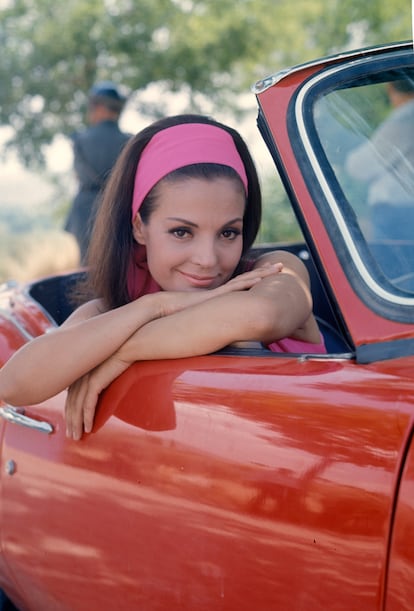
Q. What was your best-paying gig?
A. One of the most expensive was Isabel Perón. I always spent the summers in Menorca. One day, in the summer of 1991, I went down to the beach, and the manager of the beach bar came and told me: “Don’t you see who’s there? That’s Perón’s widow.” I approached her, introduced myself and asked her if I could photograph her. She was delighted. I sold those photos at a pretty penny all over the world. ¡Hola! magazine paid me millions of pesetas for the exclusive in Spain.
Q. Do you remember any others?
A. Di Stéfano with his family, in 1961. Imagine today, getting Messi with his wife and children. Marisol’s first swimsuit pose, in ‘62. Raphael in ‘63, just after he arrived in Madrid. Audrey Hepburn’s photos in Mantequerías Leonesas in ‘66, which I sold all over the world. The shoot with Juan Carlos and Sofia in ‘69, when they were still prince and princess…
Q. Is there anyone you wished you had been able to photograph?
A. No one ever said no to me.
Q. What was the photo shoot you had the hardest time getting?
A. My first shoot with Juan Carlos, when he was still the crown prince. No one knew me yet, and I had a hard time getting Zarzuela Palace to say yes. The king took a liking to me. After that, they would just call me and say: “Would you mind coming over to do a shoot?”
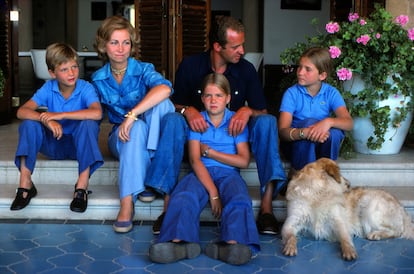
Q. What was the king like back then?
A. Really nice, pleasant, straightforward. When I met him, he was just a kid, he wasn’t anybody. He made a lot of jokes and laughed like crazy. He would always tell me: “Don’t call me your majesty.” He seems to have changed a lot.
Q. And Queen Sofía?
A. At first, she was very cold, very German. But little by little she got used to the press and became more friendly.
Q. How did they behave when they were together?
A. In front of us, they were always very polite. They held hands; he hugged her.
Q. did they seem like they were in love?
A. No, not so much. After 10, 15 or 20 years of marriage, love isn’t the same.
Q. You have known King Felipe VI since he was a kid. What was he like?
A. Nice and a little shy. But the nicest one was Cristina. She loved me very much. One day I went to photograph the all the children in the palace for Christmas. When I was leaving, Cristina came up to me and said: “When are you coming back?”
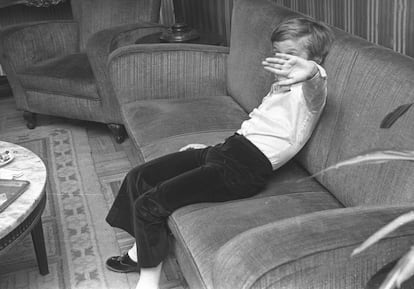
Q. Are you still in touch with Juan Carlos?
A. No. My last shoot with him was during his first official visit to Greece, in 1998, and I never saw him again.
Q. What do you think about him living in Abu Dhabi?
A. I don’t get it. He was such a nice person, so nice. I don’t know why he’s transformed into someone so… so, I don’t know... I wouldn’t even want to see him anymore. He’s changed so much.
Q. There’s a photo of Juan Carlos I and Franco playing golf together, shortly before the dictator died. Did they get along with each other?
A. They had a very amiable relationship. Franco treated Juan Carlos well and vice versa. They talked with each other a lot.
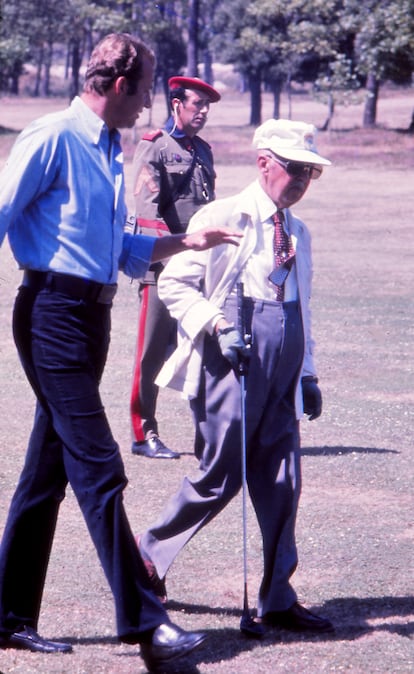
Q. The people portrayed in glossy magazines have changed a lot since then, haven’t they?
A. Around the year 2000 or 2001 I started feeling disenchanted, because the subjects didn’t pay attention to you anymore. Before, people would pose and thank you. Since 2000, everyone just asks you for money. Now celebrities are only interested in money.
Q. Your photos continue to be published all over the world. How does it feel to see that your work is still relevant?
A. It’s not because the photos are mine; it’s because the subjects I photographed are important.
Q. But they’re your photos, you were there…
A. I was lucky to be at the right place in the right time. I never studied photography. Technically, my photos were not perfect. But each image told a story.
Sign up for our weekly newsletter to get more English-language news coverage from EL PAÍS USA Edition
Tu suscripción se está usando en otro dispositivo
¿Quieres añadir otro usuario a tu suscripción?
Si continúas leyendo en este dispositivo, no se podrá leer en el otro.
FlechaTu suscripción se está usando en otro dispositivo y solo puedes acceder a EL PAÍS desde un dispositivo a la vez.
Si quieres compartir tu cuenta, cambia tu suscripción a la modalidad Premium, así podrás añadir otro usuario. Cada uno accederá con su propia cuenta de email, lo que os permitirá personalizar vuestra experiencia en EL PAÍS.
¿Tienes una suscripción de empresa? Accede aquí para contratar más cuentas.
En el caso de no saber quién está usando tu cuenta, te recomendamos cambiar tu contraseña aquí.
Si decides continuar compartiendo tu cuenta, este mensaje se mostrará en tu dispositivo y en el de la otra persona que está usando tu cuenta de forma indefinida, afectando a tu experiencia de lectura. Puedes consultar aquí los términos y condiciones de la suscripción digital.
More information
Archived In
Últimas noticias
Most viewed
- Oona Chaplin: ‘I told James Cameron that I was living in a treehouse and starting a permaculture project with a friend’
- Sinaloa Cartel war is taking its toll on Los Chapitos
- Reinhard Genzel, Nobel laureate in physics: ‘One-minute videos will never give you the truth’
- Why the price of coffee has skyrocketed: from Brazilian plantations to specialty coffee houses
- Silver prices are going crazy: This is what’s fueling the rally











































